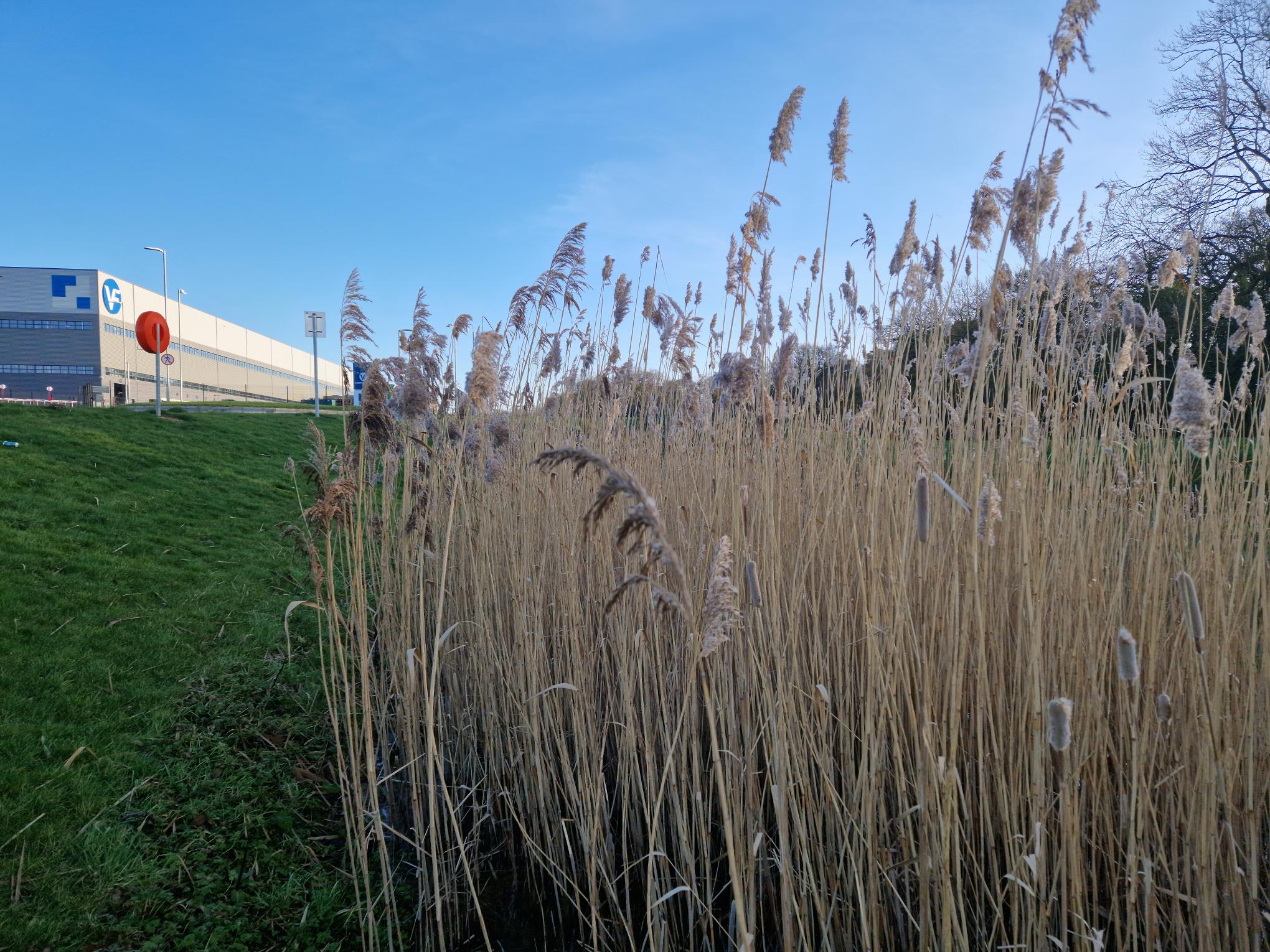Turning an industrial development in the heart of Leicestershire, UK into a local ecosystem
In the heart of Leicestershire, Bardon II is a former 73-acre arable farm which had been sold in 2016 and granted permission for the creation of a warehousing and logistics hub for a corporate management company.
Three distribution units were constructed totalling 1.3 million square feet in size. Planning permission was granted on the basis that a percentage was landscaped for biodiversity. The Bardon II project stands as a testament to the delicate balance between a lively, working industrial development, co-existing alongside environmental conservation.
Today, the sprawling one million square feet of warehousing, once a green corner of the Leicestershire countryside, has undergone a transformation under the care of idverde, the UK’s leading grounds maintenance and landscape company. This case study explores idverde’s involvement in the ‘Bardon II’ project, aided by specialist consultation from their RSPB partners. As a result of their work together, with clever initiatives and solutions, this site is now a thriving site for biodiversity and a local nature ecosystem.
Advice and Consultation with ecology experts at RSPB
idverde has been contracted since 1st September 2022 to manage the Bardon II site with general grounds maintenance, grass cutting, shrub pruning, hedge maintenance, weed control & litter control, all to adhere to a biodiversity and sustainable approach with large areas of grass left to grow, minimal use of chemicals and arisings repurposed for site compost. idverde recognised the ecological importance of the area before the development of the distribution units. Farmland birds, including skylarks, yellowhammers, and linnets, once called this place home. In order to bring some responsible land management ideas and build recommendations and solutions for our client, idverde also sought the expertise of RSPB Biodiversity Advisor Ross Bray, who is also the partnership Biodiversity Advisor for idverde in the Midlands.
Biodiversity Enhancement Plan
Together they devised a comprehensive Biodiversity Enhancement Plan to mitigate the environmental impact of industrial development. The plan includes various initiatives aimed at preserving and augmenting the local biodiversity:
- Underground Hibernacula: Providing safe hibernation spaces for small animals, contributing to the overall biodiversity of the site.
- Bee Banks: Establishing areas dedicated to supporting bee populations, crucial for pollination and maintaining plant diversity.
- Seed Crops: Introducing diverse seed crops to enhance foraging opportunities for birds and insects.
- Pole-Mounted Kestrel Box: Installing kestrel boxes to encourage nesting, contributing to natural pest control.
- Wildflower Banks: Creating spaces adorned with native wildflowers, not only for aesthetic appeal but also as essential nectar sources for pollinators.

Mowing Regime and Wildflower Seed Mixes
The Biodiversity Enhancement Plan advocates for a new mowing regime from the existing ground maintenance contract, incorporating buffer strips around hedgerows and leaving areas uncut for several seasons. Additionally, suitable mixes of wildflower seeds were introduced onto grassland embankments, further supporting bee habitats and providing nectar sources.
Winter Seed and Cover Crops
To ensure year-round support for bird and insect life, the plan recommended the sowing of winter seed and cover crops. These crops will serve as foraging and shelter belts, enhancing the overall biodiversity of the site.
Sustainable Urban Drainage Systems (SUDs) and Wetland Areas
Bardon II already boasts Sustainable Urban Drainage systems (SUDs) and Storm Retention Basins. idverde plans to enhance these features moving forward, providing an opportunity to diversify wetland areas through targeted management. Grey wagtails, an amber-listed species, have been observed utilising the SUDs for foraging, demonstrating the effectiveness of these measures.
Woodland Conservation
With approximately 3 hectares of woodland on the site, idverde’s recommendations include habitat piles, bat boxes, and nesting boxes for species like redstarts and spotted flycatchers. Standing deadwood will be created to offer roosting and foraging sources for various bird species, as recorded by local RSPB Volunteer Biodiversity Surveyors.
Volunteer Surveys and Public Engagement
A dedicated team of local RSPB Volunteer Biodiversity Surveyors conducts regular wildlife and habitat surveys on the site. These surveys aim to identify priority species and monitor the success of conservation efforts. Notably, brown hares were recorded in May 2022, showcasing nature’s resilience amidst industrial development.
Visitors and employees are encouraged to explore the circular path on Bardon II, fostering a connection with the new habitats. Future plans include engaging employees in distribution centres through practical work and event days, involving corporate volunteers. This initiative aligns with the Business Conservation Advice team’s 2030 Saving Nature strategy, aiming to increase public awareness through education and proactive engagement.
Replication of Success
As a testament to the success of their efforts on Bardon II, idverde has been asked to replicate these biodiversity enhancements across similar managed sites. This recognition underscores the positive impact of sustainable grounds maintenance practices in harmonising industrial development with ecological preservation. Through idverde’s commitment and collaboration with conservation experts, Bardon II serves as a model for responsible environmental stewardship in the face of industrial expansion.

Have a question for the idverde group?
Contact idverde group
Do you have a question for a particular park place country? Try these links:







